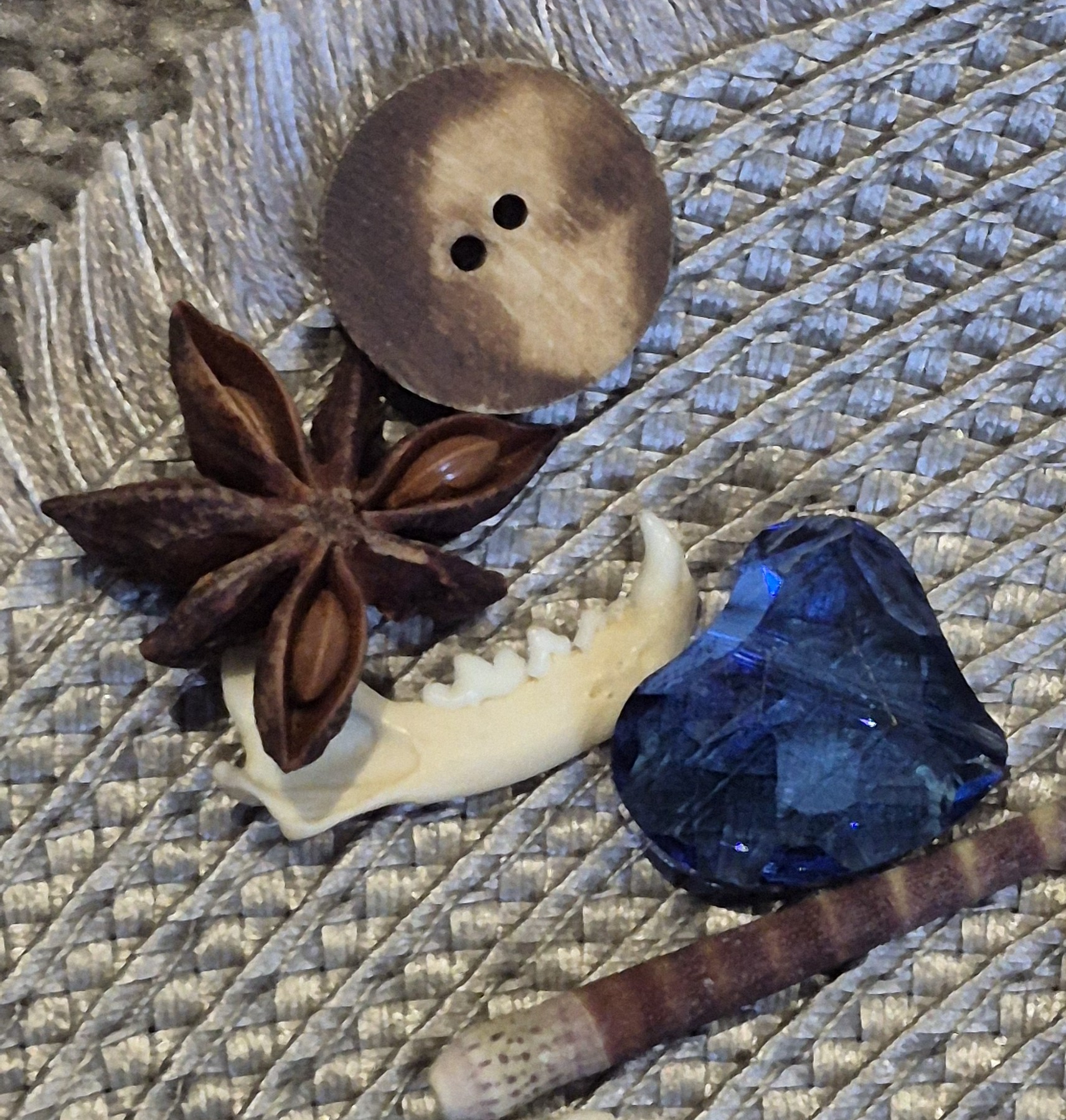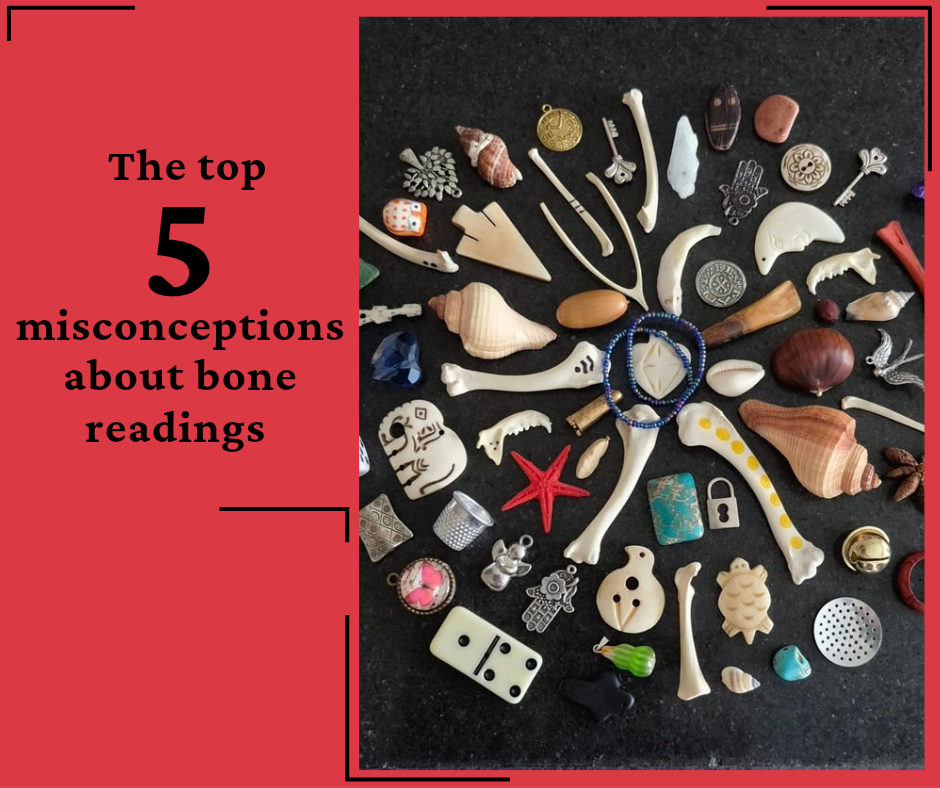If you’ve ever wondered what a bone reading is, you’re not alone. The phrase sounds mysterious, maybe even a little eerie, but at its core, a bone reading is simply a form of symbolic interpretation using small objects—often bones, shells, stones, or other meaningful items. People who practice bone readings use these objects to gain insight into situations, decisions, or relationships. It’s an ancient practice that has appeared in many cultures throughout history, each with its own methods and traditions.
The Basics of Bone Reading
A bone reading, sometimes called “throwing the bone” and “bone casting”, is a type of divination or interpretive practice. The reader casts a collection of small objects onto a surface, often a cloth or designated space, and then interprets the way the pieces land and interact with each other.
Despite the name, modern bone readers don’t always use a bone reading set comprised solely of animal bones. The “bones” might include stones, coins, shells, dice, keys, or carved tokens—anything that holds symbolic meaning. Each piece represents something specific, and the way they fall together forms a story or message.
At its core, a bone reading is about observation and intuition. The objects don’t necessairily predict the future in a literal sense; instead, they offer a framework for reflection and understanding. The reading helps the person receiving it see connections or perspectives they might have missed.
Where Bone Reading Comes From
Bone reading has deep historical roots. Variations of it have been practiced for thousands of years across Africa, Asia, and parts of Europe. In some African traditions, for example, bone divination is part of a Sangoma’s spiritual and healing practices, where the reader (the Sangoma in question) will have been trained for many years. In ancient China, oracle bones—often pieces of ox scapula or turtle shell—were used to seek guidance from ancestors and deities.
These practices evolved over time. In America, for instance, some practitioners developed the habit of reading with a single animal’s bone, e.g. a Possum or a Chicken, while in other areas, a mixed set of ‘bones’ is more common.
What Happens During a Bone Reading
A bone reading often begins with the reader and the client setting an intention or focus. This could be a question about a relationship, a decision, or an area of uncertainty. Once the focus is clear, the reader “throws” or gently scatters the collection of objects onto a surface.
From there, the reader observes:
- Where the bones land – Are they grouped together or spread apart? Do some fall near or away from others?
- How they face – The direction a piece points or leans can influence its meaning.
- The relationships between pieces – Objects landing close together may suggest connection, conflict, or harmony.
Each piece has its own symbolism, which might be personal to the reader or tied to a broader tradition. For example, a key might symbolize opportunity or access, while a coin could represent resources or value. A shell might indicate an area, an element, or a specific kind of ancestor spirit.
The reader combines these observations with intuition to interpret the overall message. It’s less about fortune-telling and more about insight—helping the person understand patterns or perspectives in their life, along with messages from their ancestors and other spirits that walk with them.
Tools and Symbolism in Bone Reading
While every reader has their own unique set, a few types of objects show up often in bone reading sets:
- Animal bones – These are traditional and connect the practice to its origins. Each bone’s shape and source can influence its meaning.
- Shells and stones – Often used to represent elements, emotions, specific types of ancestor or spirit, or themes like “grounding”.
- Personal items – Small charms, buttons, or trinkets that hold personal meaning can make a set more connected to the reader’s life or culture.
- Metal pieces – Coins, keys, or small rings often symbolize human-made aspects of life, like wealth, connection, or responsibility.
The power of a bone reading doesn’t come from the objects themselves but from the relationship between the reader, the tools, and the question being asked.
Modern Perspectives on Bone Reading
In today’s world, bone reading appeals to people for different reasons. Some see it as a way to connect with history and cultural heritage. Others use it as a reflective tool—similar to journaling, therapy, or meditation.
Unlike some forms of divination that rely on strict systems or symbolism (like tarot or astrology), bone reading is deeply personal. Two readers could use the same set of objects and interpret them differently, depending on their background and experience. This flexibility allows the practice to evolve while still honoring its roots.
What Bone Reading Is Not
Because the name can sound dramatic, bone reading sometimes gets misunderstood. It’s not about predicting exact events or controlling outcomes. It’s also not tied to any one religion or belief system. While some traditions treat it as a spiritual ritual, others use it more as a reflective or meditative practice.
A bone reading isn’t about magic tricks or supernatural powers. It’s a symbolic language that helps people think differently about their situations—more like storytelling or pattern recognition than fortune-telling.
How People Learn Bone Reading
People who practice bone reading often learn through either direct mentorship or self-study. Traditional lineages still exist in some cultures, where knowledge is passed down through families or communities. Others learn by collecting objects that hold meaning and developing their own symbolic associations.
A beginner might start with just a handful of items—a few bones or small objects—and spend time learning what each one represents to them. Over time, they develop familiarity with how the pieces interact and what certain patterns tend to mean.
Learning to read bones isn’t about memorizing a fixed system. It’s about observation, patience, and developing an understanding of how symbols and stories emerge from randomness.
Why Bone Reading Still Matters
In a world full of data and instant answers, bone reading offers something slower and more reflective. It asks you to pause, look at what’s in front of you, and find meaning in patterns that aren’t immediately obvious.
The act of throwing the bones is, in a way, an exercise in perspective. You start with randomness, but through attention and interpretation, order and meaning appear. That process mirrors how people make sense of life—finding structure in uncertainty and learning from what’s already present.
Bone reading remains relevant not because it promises to reveal the future, but because it encourages thought, dialogue, and self-awareness. It’s a practice that combines intuition with storytelling, history with curiosity, and symbols with lived experience.
The Takeaway
So, what is a bone reading? It’s an ancient interpretive practice that uses physical objects—bones, shells, stones, and other small items—to explore questions and gain insight. It’s not about prediction or magic; it’s about reflection and meaning-making.
Bone reading has survived for centuries because it speaks to something timeless: the human need to understand, to find patterns, and to connect the seen with the unseen aspects of our lives. Whether practiced according to the rules of an initiatory tradition or adapted for use by an independent reader, it remains one of the most enduring ways to explore the stories hidden in plain sight.


